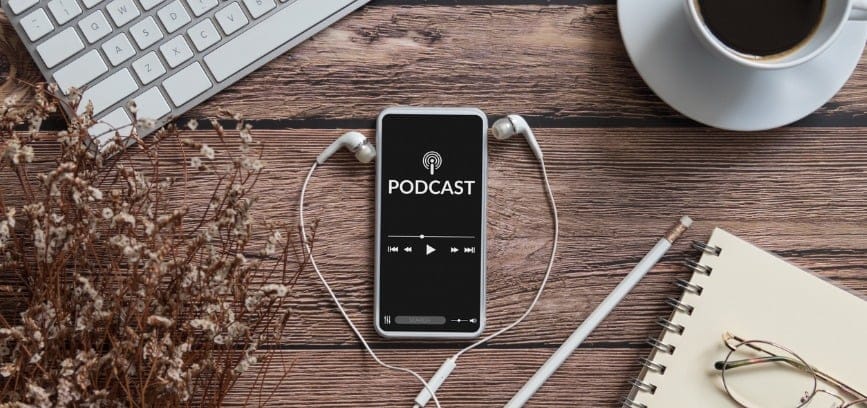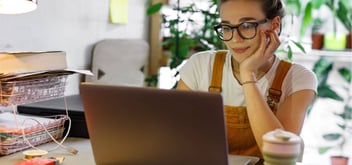Can you tell us a little bit about your role and how you got there?
I’m the Group Head of Property, Operations and Workplace Services at Nine Entertainment. I’ve worked in media for 35 years, so a reasonably late comer to property. My background is in news and current affairs, a cinematographer by trade, but that wasn’t getting me home on time and I had a desire once I had kids to stop the travel. So I moved into the corporate stream and picked up the property portfolio, then Nine network, then Nine Entertainment.
I lead strategy, workplace, development, asset utilisation, highest and best use analysis, and, and ultimately, a full P&L responsible for it.
What would you say has been your biggest achievement throughout?
Easily, the anchor tenancy and the development process of relocating Nine and the legacy Fairfax business, into the purpose-built tower at 1 Denison, which we only completed 12 months ago. That was a five-year journey.
What do you read in order to keep up to date with industry news?
Look it’s a good question. I don’t have a single go-to because I find that most organisations are usually pushing an appointment or some form of, ‘how can we help you along the way?‘, so I read a variety of material from a variety of suppliers, some large suppliers in the marketplace, like the Cushman & Wakefield’s, right down to some of the boutique agencies, probably not dissimilar to yourselves, that are pushing the hybrid workplace. For example, ‘what does the hybrid workplace look like?’, ‘life post-COVID’, and it was just less than two or three weeks ago that people were starting to talk about “post-COVID” and many of us in the room were saying, I’m afraid we’re not post-covid. And I think the recent events in NSW have demonstrated that we are so far from post-COVID, that it’s possibly even a premature conversation. At least in the last week or so we now have, if you believe what you’re reading and hearing a four-step pathway. No timeline attached to all that, but at least there’s now a program for returning life to a sense of normality and therefore businesses will return to a sense of normality.
What that means for employers in participation rates back at the office will be in the next conversation and this ongoing discussion around flexibility, flexible working and what does the hybrid workplace look like? And what’s an employer’s appetite to spend capital to change the workplace when it may not be in their best interest to do so over the medium term.
In relation to your workplace at Nine, the physical space – could you explain that in your own words?
Absolutely. So, Nine has constructed a 25,000sqm of net lettable, within the 1 Denison tenancy, with the anchor tenant there we occupy approximately 40-43%, of the net lettable, said by far and away, the largest player at the table. There are bespoke, broadcast facilities within that 25,000sqm, but there’s also a high degree of a workspace that is built on what we call kit of parts. So that was our view on flexibility, future-proofing and creating a workplace that allowed for adjustments within the built net lettable that didn’t require a conversation with the landlord, complying with development certificates, call the carpenters, call the electricians, knocking a wall down. So it’s very much open plan per se, office light, meeting room heavy, and collaboration space heavy as well and those collaboration spaces have the capability to be reset with certain types of loose furniture depending on the team, in that space of the time, depending on how they like to operate with the stand-up scrum situations or lean back, couches, for example, or of course, with the IT department, it’s the ubiquitous ping-pong tables.
So out of that facility, now we’re producing 2000 hours of news and current affairs, the Australian Financial Review is published out of there every day. The SMH is also published out of there every day. It’s a very busy facility.
There are multiple cultures at Nine. And our chief executives openly said that’s not a bad thing because they’re all collaborative, but they’re each quite tribal in the way they work.
You’ll find that the broadcast division is a little different than the Herald Editorial, for example. And, they’re both healthy cultures, but it’s very hard just to put the culture stamp on it. It’s ever-evolving, I guess is probably the term. But we’re a unified business now and the largest listed media company in Australia.
So any business of that sort of scale obviously has its challenges around maintaining unified communications, but having all the key players in the one geographical address in Sydney, which is where 70% of the argument and manufacturing occurs is positive, we’ve not spread across half a dozen different sites through Sydney.
I think because of Nine’s business, because of the criticality of it – publishing, radio to a lesser degree and certainly broadcasting – there’s a high level of resilience that’s already built into the business. So our ability to work from home or work remotely or I guess the more acute terminology with it these days is minimising your presence in the office. It’s really about, who needs to be there to do their job? And we were very successful at refining just how many people need to be in the office for critical functionality.
So what I can share with you is that it’s a 2,000 seat facility and today there would be 150 people in the room. There’d be a couple of publishing teams, for the mastheads, and the predominant number of people that need to show up every day are the people physically manufacturing broadcasts.
That’s a good question. Pre the latest lockdown our occupancy levels were back above 60%. So I actually think our return to work story was a pretty positive one. I think no business gets above 80%. The reality is with absenteeism any day of the week, annual leave, sick leave, people working, travelling interstate, work from home arrangements that were already in place pre-pandemic. I think 80 in my mind is the magic number. If you can get to 80, you’re saying you can reasonably say that your facility is 100% utilised. At 62%, I think we were well and truly on the way on the way back there. Having said that it’s a pretty steep curve, to get from the sixties up to 80. It’s not a downward curve or diminishing curve. It’s pretty steep, so I think Nine’s the sort of business that’s highly collaborative, there’s a good buzz in the workplace, particularly when you’ve got a shiny new office to go to. So there are aggregators there that draw people back into the office and I think in the fullness of time, I think premium office space and the premium building will be the winner’s post-pandemic and their ability to draw people back into the office place with a good offering.
Look, it’s a well-trodden road now. Right so we’ve managed lockdowns in our facilities in Victoria – they’ve had four lockdowns since the pandemic. So it’s a smaller facility, but once you’ve done something once you learn from it. It becomes a little easier and our lockdown this second time around is kind of seamless. People knew what to do, the technologies are in place, so they just pick up and they go basically. So for example, because I’ve got a workplace team, we need to be on-site, right? Because you’ve got 12,000 asset line items in one building at any one day, something’s going to be misbehaving, right? So it needs to be managed and triaged on a daily basis, so my team operate alternate days so we minimise risk, and I’ve quite purposely stayed away from the office, so that if anything does occur, then I’m operating from a satellite perspective.
But again, that’s not rocket science. We learned all that from the first go to the pandemic back in March or April last year. So that was a model that works successfully, across a number of teams. And we just sort of snapped back into that model.
No, it’s still part of this hybrid working conversation. I’ll get back to my comments earlier about people talking about post-pandemic. There was a big push in the marketplace to say, “this is what the post-pandemic office might look like…How does it fit in with your office?” And again, I’m saying it’s way too early to be having those conversations. Particularly when you’re getting return rates north of 60%. I actually think the impact on what a modern office will look like – I call ours a modern office in that it’s less than 12 months old – will be minimal, discrete if required at all, to be honest. And that won’t be known until probably 12 months post-pandemic when behaviours start to settle in, and employers have reached a point where they are comfortable with the level of workplace participation. If you’re a keen observer of it, there were some senior employers in the marketplace talking pre this lockdown in New South Wales and Sydney about “we need to get our people back, this is what we’re doing to get them back…” There’s a reasonable adoption of “we’ve changed the way we’re going to work forever” but yes, that’s a good thing. It doesn’t mean I’m going to work from home four days a week, or three and two.
It just means that that ability is there. Should the need be but the majority of the endeavour will still occur within the workplace. We’re social beings, we’re social animals. Look at us, we’re on a video call now. We’re not on a telephone call because people like to see each other. They like to read facial expressions and bounce off that sort of energy. I just don’t think that’s going to change.
I think like any business, we didn’t truly see the gravity of it initially, but we responded quickly like all businesses did I suspect, or any business that survived, responded quickly. We had obviously revenue challenges and all sorts of things when the pandemic first started, but our sales market bounced back dramatically and that’s all being openly reported. Media sales are up, back to pre-pandemic levels and in some cases above pandemic levels. The reality is we responded quickly, like most other businesses, and what you would expect from a large business that’s well-resourced with a lot of big brains operating within it.
Good question. People talk about productivity, it’s a difficult thing to measure, to truly measure. The reality for us is because we’re a 24/7 business, we’re generating news content and distributing it 24/7, in streaming services, our business never stops.
Productivity is kind of a ’round the clock’ thing. You’d find very few people in our business that would consider themselves 9-5ers. So it depends on how you want to manage productivity. I think the best way to answer your question is we haven’t seen a drop off in productivity. You might find that sometimes communication lines become challenged simply because the day-to-day business becomes overwhelmed with the need to provide a response to COVID, for example. Departments like mine who run workplaces, actually have to work harder during pandemics because there’s more to do as you break away from BAU. Whereas other teams, it’s still literally a case of pick up the laptop, go home, plugin and away you go.
It’s alive and well. Alive, well and prospering.
No, I don’t so, I’ve been pretty clear on my sentiment. I think the office is alive, well and prospering, and it’s going to kick into a new growth phase. Post-pandemic, what does that look like in Australia? I don’t know. Mid 2022, I think once the pandemic is behind us, you’ll see increased economic activity, and it’ll drive growth. And then that’ll drive people back into the cities, and back into the business hubs, and there’ll always be now this ingrained flexibility to work remotely, but I don’t believe the pendulum will swing to remote work overwhelmingly over time.
That’s a really good question. My key advice is you do have to educate yourself. I went back and did my MBA 20 years ago. The operational experience was invaluable, absolutely invaluable – you know more about the business than anyone who will ever walk in. But, if you educate yourself, concurrently with having that ingrained operational knowledge of knowing the business from the ground up, it becomes a very powerful, toolset.







